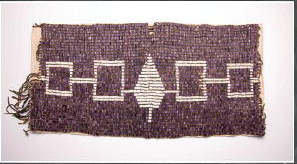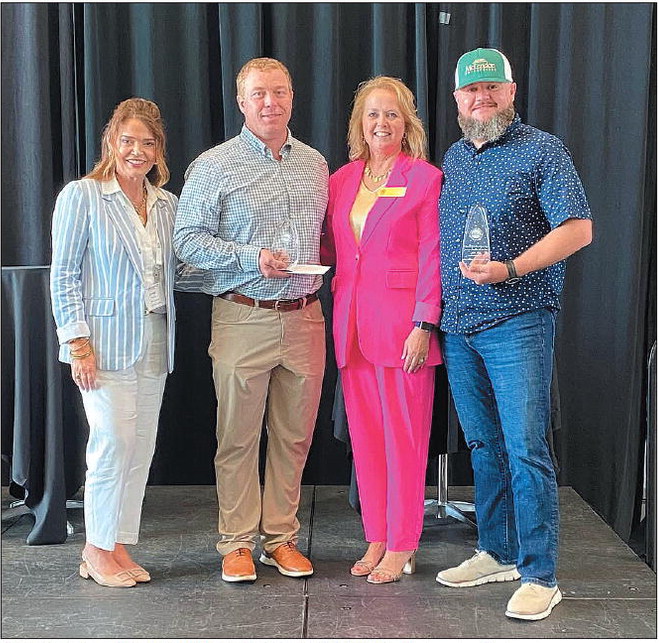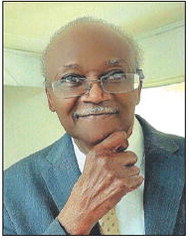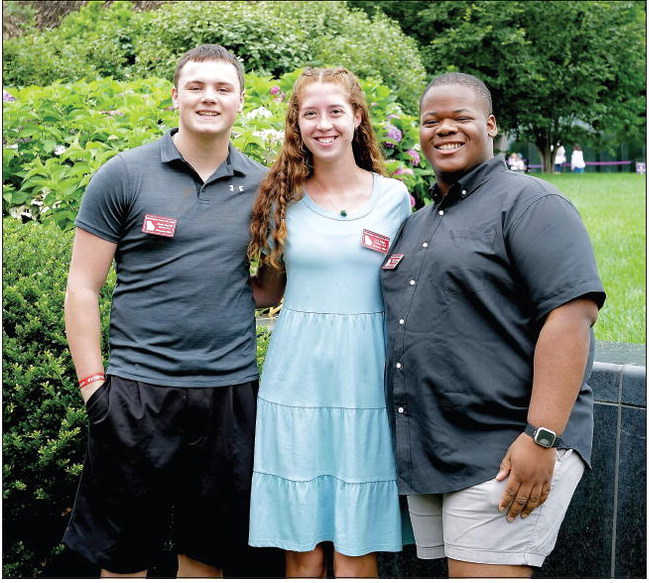tv*TeacUabie Teachable Moment


the tv*TeacUabie Teachable Moment How is the Hiawatha How is the HiawathaBelt connectedwith thephrase “bury the hatchet”?
the
with
The Hiawatha Belt was named for Hiawatha, a precolonial Native American leader who persuaded the Senecas, Cayugas, Onondagas, Oneidas, and Mohawks to make become Five Nations the Iroquois Confederacy. When Confederacy
Hiawatha named Hiawatha, a precolonial Native who persuaded Senecas, Cayugas, Onondagas, peace and become the Five Nations of the Iroquois Confederacy. When the Confederacy was formed, formed, each nation had its own council to govern its people, but under one common law, one heart, and one
council govern
people, common one one
Hiawatha belt consists of
mind.
The Hiawatha belt consists of five symbols joined together. The first represents the Mohawk, the Eastern Doorkeeper. The next indicates
symbols represents
Oneida,
third, which
The indicates the Oneida, the People of the Standing Stone. The third, which identifies the Onondaga tribe, is the tree, and legend records that the Tree of Peace was uprooted and the leaders buried their weapons of hate, jealousy, and war beneath it symbol truce. fourth
legend Peace was uprooted their weapons of beneath as a symbol of a truce. The fourth represents the Cayuga, the People the Cayuga, the People
fifth belongs the Western Doorkeeper.
of the Swamp. The fifth belongs to the Seneca, the People of the Great Hill,the Western Doorkeeper.
When there is a Grand Council of the Haudenosaunee (the Iroquois), present leaders to maintain
Grand Council the Haudenosaunee (the Iroquois), the Hiawatha Belt is present to remind the leaders to maintain the peace and to make decisions for today, future Haudenosaunee citizens
decisions not only for today, but for future Haudenosaunee citizens yetunborn.
The Belt is extremely old.
records when buried of
old. It records when these five warring nations buried their weapons of war to live in peace. Today, the Hiawatha Belt has been fashioned into a flag that has places around of Henry Wadsworth Longfellow’s 1855 end of the nineteenth century cliché peacemaking sides of into a been flown in many places around the world. Because of Henry Wadsworth Longfellow’s famous 1855 poem “The Song of Hiawatha,” by the end of the nineteenth century “burying the hatchet” was a cliche for peacemaking on both sides of the Atlantic.





